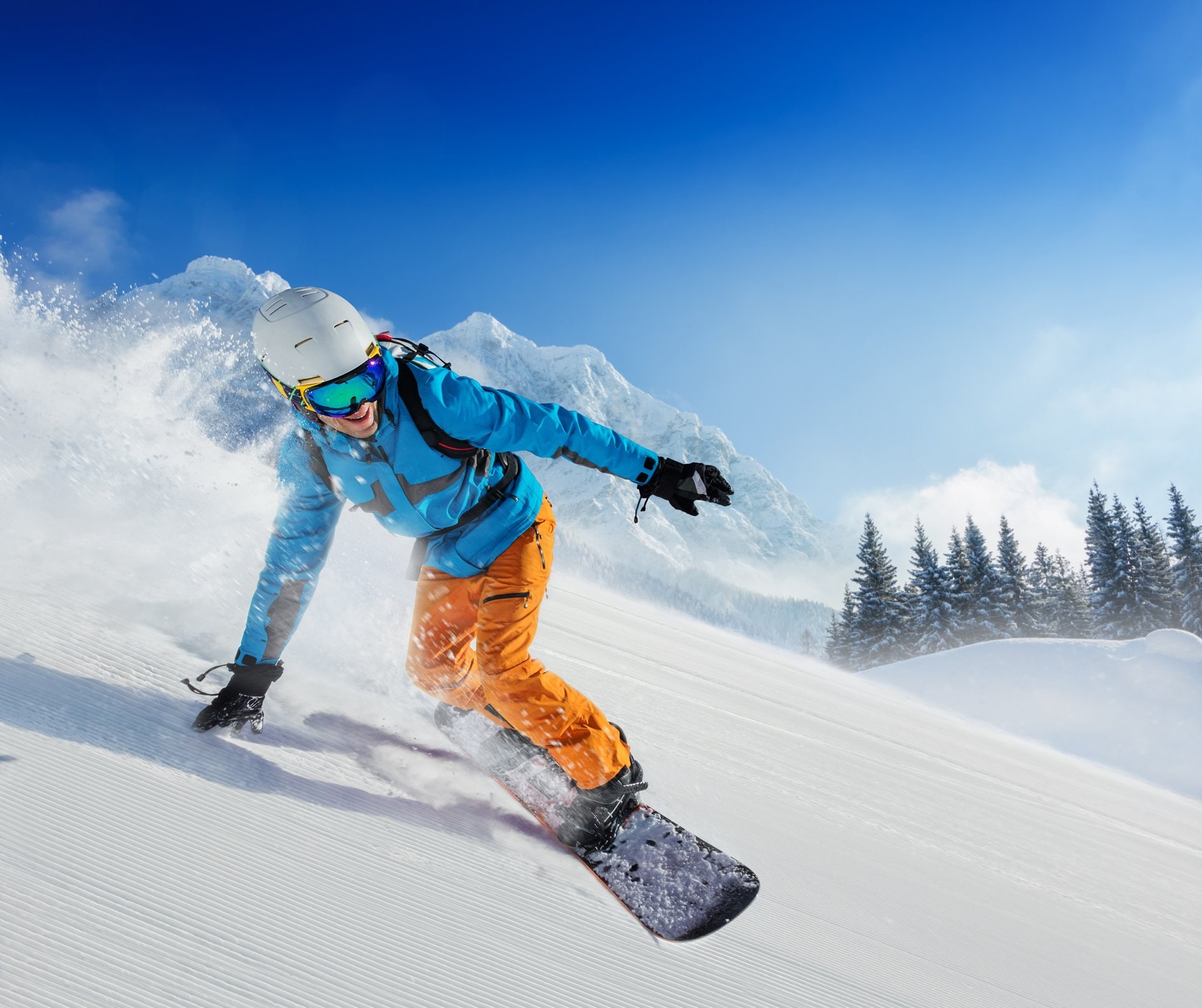
Snowboarding & Wrist Injuries
Snowboarding is one of Tahoe’s greatest draws and thousands of snowboarders spend fun-filled days on its slopes each year. The sport offers excellent cardiovascular benefits, tones muscles, and burns calories, however, snowboarding is not without risk, especially when learning or progressing in the sport.
Due to equipment differences and rider stance, snowboarders use their arms, rather than poles like skiers, to maintain their balance. Accordingly, many snowboarding-related injuries come after a forward or backward fall broken by a rider’s outstretched arms, resulting in wrist sprains and fractures.
And while all snowboarders are at risk of wrist injuries, until a beginning rider feels more comfortable maintaining their balance, they are at increased risk, largely due to frequent falls.
Wrist sprains are an overstretching or tearing of a ligament causing pain, swelling, bruising, and weakness. Mild sprains can be treated with RICE (rest, ice, compression, and elevation). Occasionally a sprain will be severe enough to require surgical repair.
The complex structure of the hand, wrist, and forearm present many possible places for fracture from a fall. Fractures will typically cause swelling, bruising, and pain and are treated with immobilization (casting) or surgery.
It can be difficult to differentiate between a wrist sprain and fracture — a visit to an urgent care, emergency department, or orthopedic specialist for an accurate diagnosis and subsequent treatment may be required.
There are a few things riders can do to help prevent wrist injuries while snowboarding:
- Maintain your equipment — get a pre-season tune-up and frequently check for inoperative or damaged gear.
- Warm up and stretch — make sure your body is ready for the physical demands of snowboarding.
- Wear protective gear — wearing wrist guards can help prevent wrist fractures and all snowboarders should wear a helmet.
- Learn to fall correctly — as soon as you feel like you’re losing control, get ready to fall by getting low to the ground with bent knees and try to keep your arms bent and close to your body.
- Say no to reckless behavior — snowboarding while intoxicated places yourself, as well as others on the mountain, at a much greater risk.
- If you’re headed into the backcountry — always venture out with a buddy, check avalanche reports (sierraavalanchecenter.org is a good local resource), create a plan with your crew (and stick to it), and always carry the proper safety equipment including beacon, avalanche shovel, and probe, along with a first aid kit.
Snowboarding can be an incredibly rewarding way to spend time outdoors. Consider these tips to prevent injuries and preserve your wrist health before strapping in.
Katie Gollotto, DO is a board-certified sports and physical medicine specialist offering non-surgical orthopedics and sports medicine solutions to the active Lake Tahoe community. Dr. Katie sees patients at Stateline Medical Center. To learn more about Barton’s Sports and Physical Medicine services, call 775.589.8915 or visit BartonHealth.org.